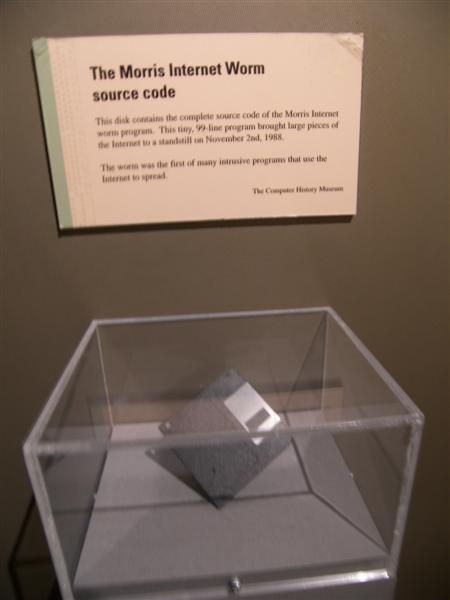
Computerworm – Wikipedia
A computer worm (or worm for short) is a self-replicating computer programme. Copies of this worm are transmitted over a network without an intermediate user’s intervention. A worm is not a computer virus because it does not need a computer programme to attach itself to. It can be argued that a worm damages a network, where a virus makes a targeted attack on a computer.
Distribution
The difference with a computer virus is that a worm spreads itself across the net, while a virus by itself cannot. A computer virus needs a host such as a file or email. This is to a computer worm’s advantage. It tries to sneak in infected code on all open ports of a computer. For example, a leak in Windows Explorer has already caused a lot for the spread of worms on the net.[source?] A link to the internet is then enough to get infected.The difference with a computer virus is that a worm spreads itself across the net, while a virus by itself cannot. A computer virus needs a host such as a file or email. This is to a computer worm’s advantage. It tries to sneak in infected code on all open ports of a computer. For example, a leak in Windows Explorer has already caused a lot for the spread of worms on the net.[source?] A link to the internet is then enough to get infected.
Types
Payloads

The source code of the Morris-worm in the Computer History Museum.
There are worms that are made to spread only themselves and these do not try to modify intermediate systems. Network traffic does get slowed down over and over again and fake accesses can sneak into your configuration. Examples of this type of worm are the Morris worm and Mydoom.
The payload is the payload, the purpose for which the worm was written and is usually only useful to its creator. For example, the ExploreZip worm will delete certain files, others encrypt them via a cryptology attack or send documents via mail. The most common payload is to install a backdoor on a computer to send unwanted e-mail, for example. These backdoors can also be used for other payloads. An example is Doomjuice which sneaks into a system via the backdoor of a Mydoomworm.
XSS worms
Cross site scripting (XSS) worms are written for a website to infect visitors. These worms appear on well-known social sites such as MySpace, Hyves, Facebook and
Useful worms
Some worms are written to make a system more user-friendly. Xerox PARC and the Nachi worm try to download and install patches from the Microsoft website. Again, the downside is that other worms take advantage of this. Some people find this useful but it is time-consuming and takes away the choice of the owner or user.
Logic bomb
If a worm only does damage at a predetermined time (like a time bomb) or the moment the software detects a certain change, it is referred to as a logic bomb.
See Logic bomb for the lead article on this topic.
Protection
A computer user can protect themselves by keeping the computer system up to date by installing updates and patches, and by providing the system with an up-to-date antivirus software.
